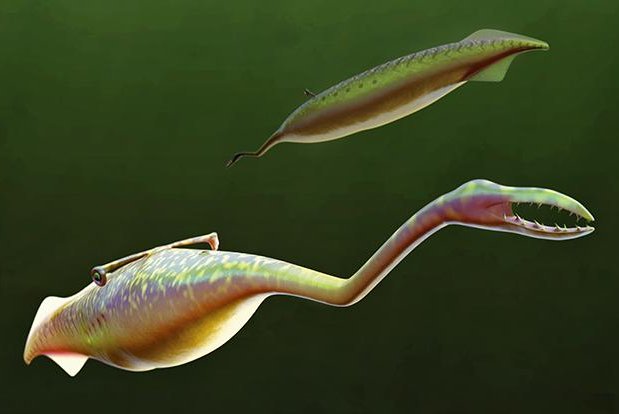Researchers have collected thousands of Tully Monster fossils, but were only recently able to classify the species as a vertebrate. Photo by Sean McMahon / Yale University
NEW HAVEN, Conn., March 16 (UPI) -- Finally, scientists have confirmed the identity of the Tully Monster. The oddly shaped, soft-bodied sea creature was a vertebrate.
The Tully Monster, Tullimonstrum gregarium, lived 300 million years ago, boasting gills, a body-supporting cartilage rod known as a notochord and wide-set eyes extending along a bar set across the ridge of its back. The monster stretched just a foot long, a with a trunk of a neck leading to a mouth lined with rows of teeth.
"With all of the exceptional fossils, we had a very clear picture of what it looked like, but no clear picture of what it was," Victoria McCoy said in a news release.
McCoy, now at the University of Leicester, led the study into the Tully Monster and its fossil record while a grad student at Yale University. She is the lead author of a new study on the creature, published this week in the journal Nature.
Until now, the Tully Monster hadn't been classified beyond the taxonomic rank of class. McCoy and her colleagues confirmed the Tully Monster's identity and classification after examining the morphology of some 2,000 of Tully Monster fossils at Chicago's Field Museum.
The new and improved understanding of the Tully Monster's anatomy was made possible by a novel fossil analysis technique called synchrotron elemental mapping. The method uses chemical analysis to reveal the functionality of an animal's physical features.
Results suggest the Tully Monster's notochord served as a rudimentary vertebra, allowing scientists to place the species within the lineage of the modern lamprey.
Despite the latest revelation, the Tully Monster's evolutionary history -- when it first appeared and when it went extinct -- is still not well understood. Scientists have uncovered thousands of Tully Monster fossils, but they've all been excavated from a single mining site in Illinois, comprising only a limited stretch of the Carboniferous period.
Its behavior also remains a mystery.
"It's so different from its modern relatives that we don't know much about how it lived," McCoy said. "It has big eyes and lots of teeth, so it was probably a predator."















